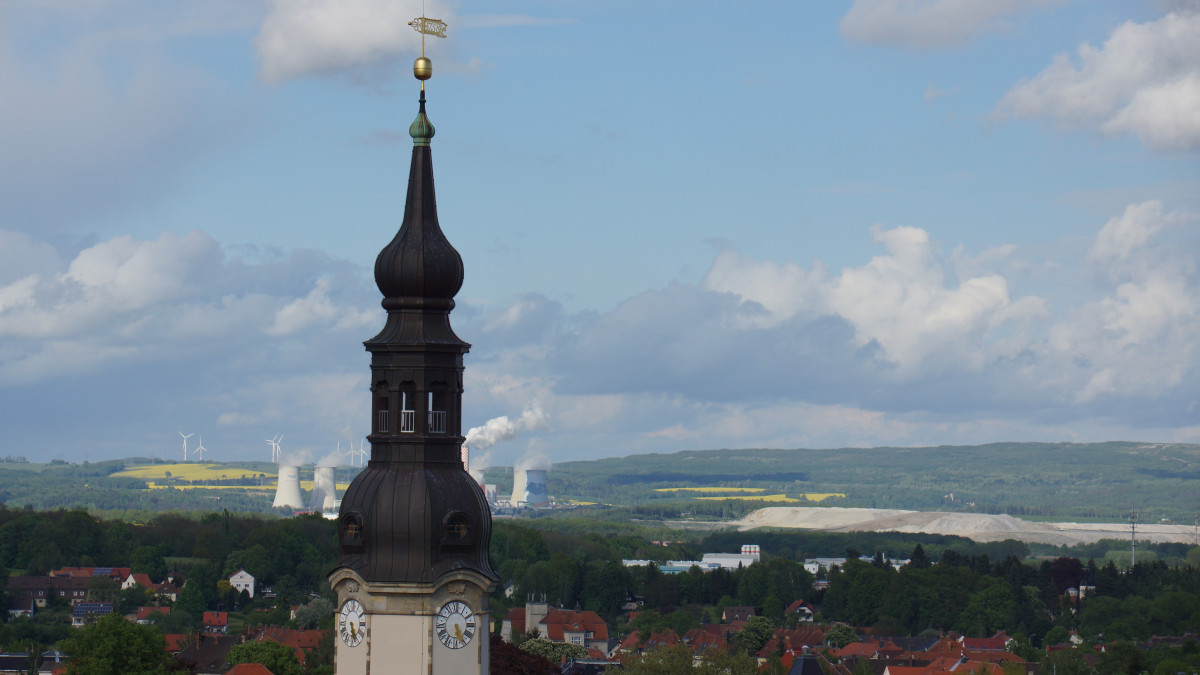Dispatch from Poland | August '24
***Our weekly Dispatches provide an overview of the most relevant recent and upcoming developments for the shift to climate neutrality in selected European countries, from policy and diplomacy to society and industry. For a bird's-eye view of the country's climate-friendly transition, read the respective 'Guide to'.***
Stories to watch in the weeks ahead
Stories to watch in the weeks ahead
- Polish electricity for Ukraine – Warsaw seeks an exemption from paying for carbon allowances in the EU Emissions Trading System (ETS) for electricity generated from burning coal that is sent to Ukraine, as the country struggles with growing damage to its energy infrastructure caused by Russian attacks. Donald Tusk, the prime minister of Poland, said this during a press conference with Ukrainian president Volodymyr Zelensky. However, the European Commission said the EU's focus for the time being is on increasing the technical capacity of the existing EU-Ukraine electricity interconnectors, not on increasing electricity production. The EU added that electricity production "is covered by the normal EU ETS rules, meaning that installations burning coal must surrender ETS allowances corresponding to their emissions – i.e. they are paying for the emissions in line with the polluter pays principle which is the foundation of the ETS."
- A possible increase in Ukrainian refugees – In the face of Ukraine's energy problems, Poland is preparing for a potential influx of refugees this autumn and winter. Ukrainians might have to leave their homes if they cannot heat them or have no electricity, said Poland's foreign minister Radosław Sikorski. Since the beginning of Russia's full-scale invasion, Poland has been one of the main destinations for Ukrainian refugees. At the end of June, there were 961,180 Ukrainian refugees in Poland, according to Eurostat data. Among EU countries, only Germany, with 1.3 million, has more.
- Liberalising rules for onshore wind farms – The Polish government has begun work on loosening restrictions on the construction of onshore wind turbines, lowering the minimum distance from homes to 500 from 700 metres. This is a compromise on the original idea of the ruling coalition, which, even before taking office, submitted a draft to reduce the minimum distance from houses to as low as 300 metres. The former ruling Law and Justice Party (PiS) staunchly opposed the proposal. The new draft is expected to be approved by the cabinet in autumn. It will probably reach parliament after the summer holidays, climate minister Paulina Hennig-Kloska told news service Money.pl.
- First regulation of hydrogen market - The Polish parliament will work on the country's first bill regulating the hydrogen market after the summer holidays, as the government bets on hydrogen one day replacing fossil gas and helping speed up the energy transition. According to the climate ministry, a lack of regulation slows down the development of the hydrogen economy and the introduction of new technologies. In June, the Polish state energy giant Orlen opened its first publicly available hydrogen refuelling station for passenger cars, trucks and buses. It is located in the Western city of Poznań which already has a fleet of 25 hydrogen-fuelled buses.
- Nuclear plans – Work on picking the potential location for Poland’s second planned nuclear power plant was halted in mid-2023 under the PiS government "for unspecified reasons," said Maciej Bando, the deputy climate minister responsible for strategic energy infrastructure. The new ruling coalition restarted work and will announce its decision "in the middle or third quarter" of next year, he added. Poland aims to build the plant in the vicinity of existing coal-fired power stations which are about to be closed. In October last year, Poland confirmed its plans to build the first planned nuclear power plant in Choczewo, a municipality on the Baltic coast around 80 kilometres west of Gdańsk.
The latest from Poland – last month in recap
The latest from Poland – last month in recap
- Fresh data on energy production - In the first half of 2024, more than 28 percent of the electricity generated in Poland came from renewable energy sources, reports news service Energetyka24, based on data from Polish grid operator PSE. Poland is the EU country most reliant on coal. In 2023, 25 percent of electricity was generated from renewables. Total electricity production increased by around 3 percent year on year, and consumption increased by around 2.6 percent. Electricity production from wind increased in the first half of 2024 by 23 percent compared to the same period last year, with production from other renewables increasing by nearly 35 percent. Over the same period, electricity production from hard coal fell by 7 percent.
- Offshore wind getting closer – The European Commission has approved Poland's plan to use around 194 million euros of EU funds to construct an offshore wind terminal in the seaport of Gdańsk. The terminal will facilitate the installation and servicing of wind turbines at Poland's first offshore wind farm, Baltic Power. Its construction is set to begin this year.
- Energy security – Poland’s National Security Bureau (BBN), together with President Andrzej Duda, provided the government with recommendations for a new security strategy. Among the recommendations on energy security, the bureau mentioned the need to strengthen the protection and reliability of the electricity generation and supply system. Suggested measures include investments in energy storage, further pursuit of large and small nuclear power programmes, onshore and offshore renewable energy, and the development and implementation of a strategic programme for decentralised energy. Many of the security lessons are drawn directly from the Russian invasion of Ukraine, with Russia having recently increased attacks on Ukrainian energy infrastructure.
- Environmental protection – Poland announced plans to establish 14 "community forests" to help create "green rings" around large cities. The forests will provide a place for recreation while helping fulfil the government's pledge to exclude 20 percent of the “most valuable forest areas” from logging.
Alicja's picks – Highlights from upcoming events and top reads
Alicja's picks – Highlights from upcoming events and top reads
- On the first of January 2025, Poland will take over the EU presidency. Polish think tank Forum Energii has taken a look at the energy transition tasks facing Poland during its term.
- Polish think-tank Instrat Foundation has prepared a report examining the companies and industries that emitted the most CO2 in Poland in 2022. The most emitting industry was cement production and the most emitting company was state-owned energy giant Orlen. Among the largest emitters of CO2, only global steelmaker ArcelorMittal recorded decreases in emissions.
All texts created by the Clean Energy Wire are available under a
“Creative Commons Attribution 4.0 International Licence (CC BY 4.0)”
.
They can be copied, shared and made publicly accessible by users so long as they give appropriate credit, provide a
link to the license, and indicate if changes were made.


